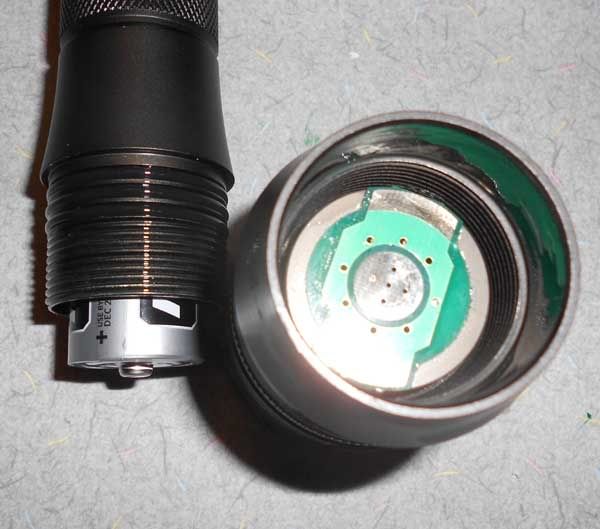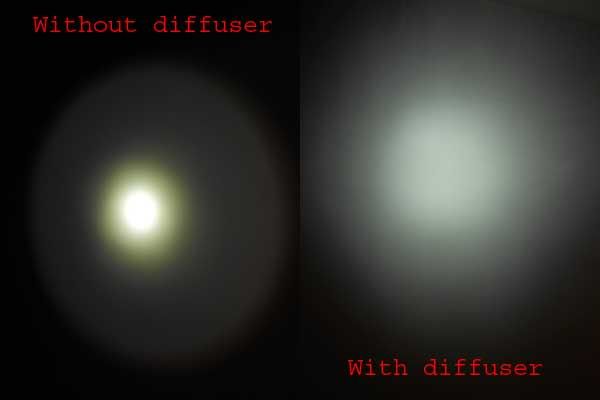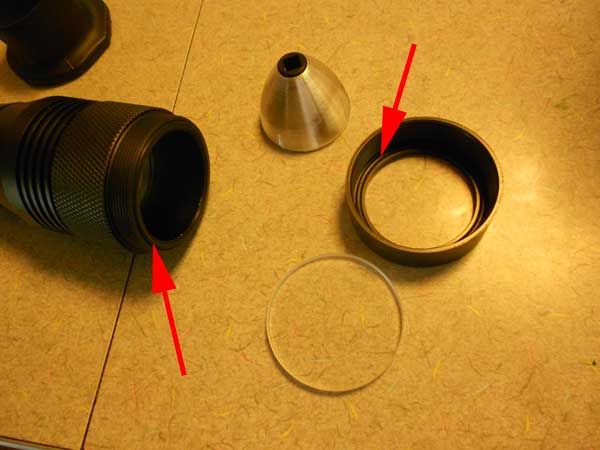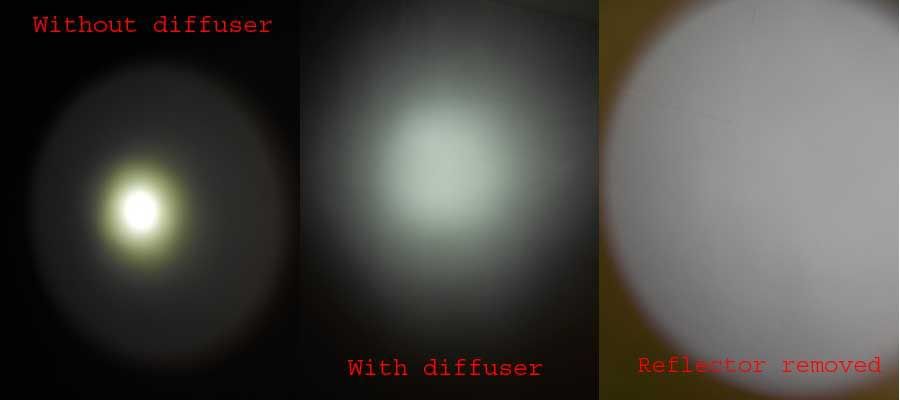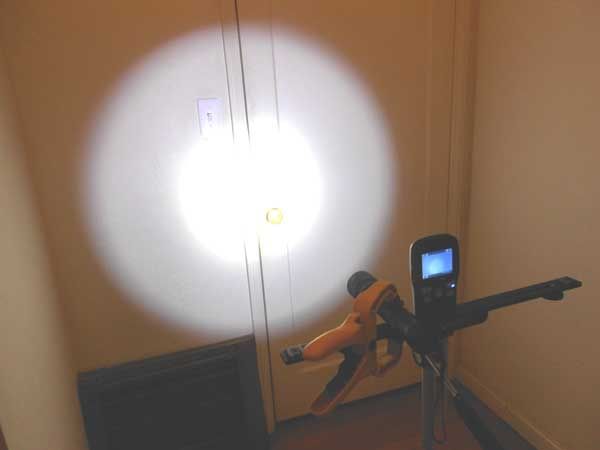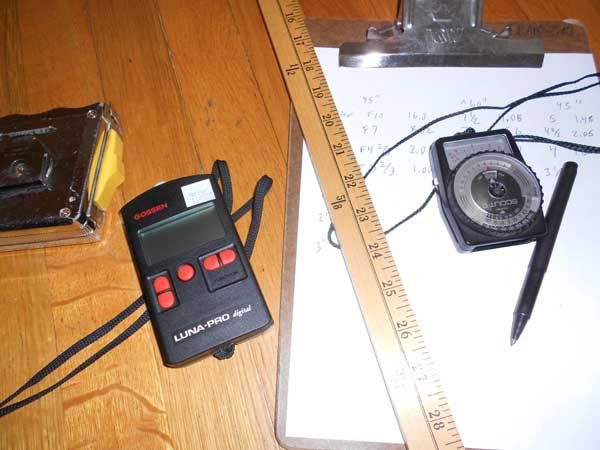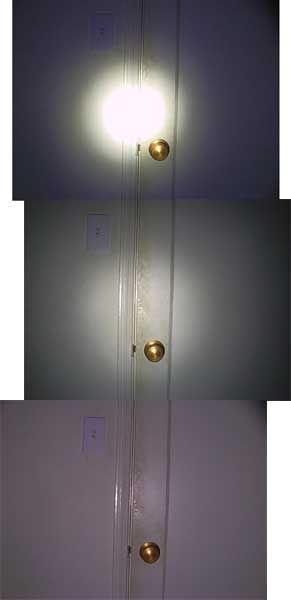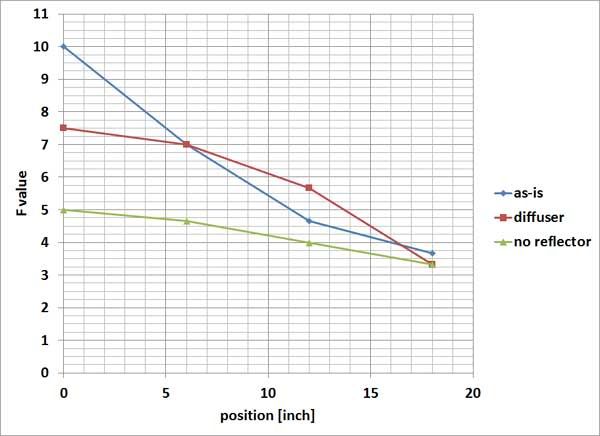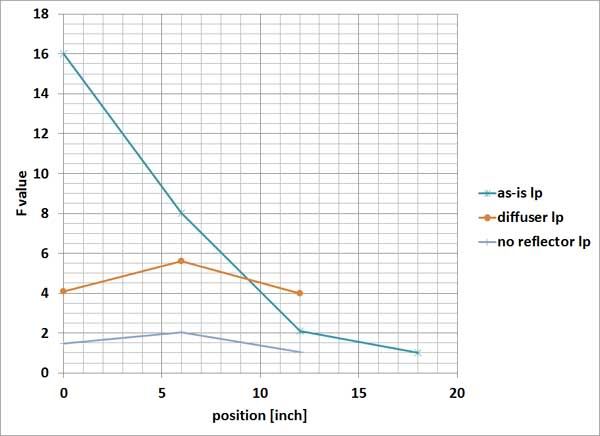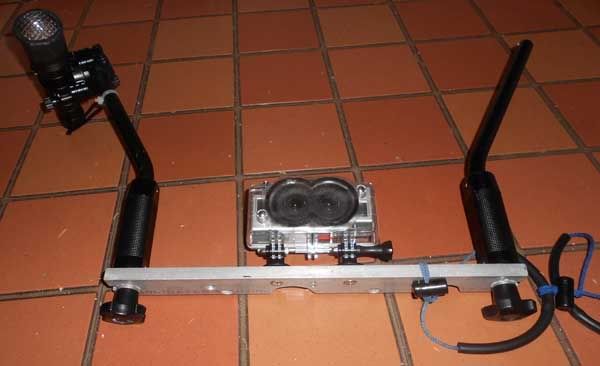Yes, "fluorescent light acrylic covers" is exactly what I've been using. Tap plastics conveniently gives away small4"x4" samples.
Sorry, but I weaseled out of today's dive, so no video to share yet. I did, however, open up the front of my DRIS light---it was easy once I knew where to twist.
The front lens is sandwiched between two O-rings (see arrows). The reflector diameter is 1 11/32". I'm thinking of replacing it with a cylindrical reflector to reflect light impacting the black sides of the light. This cylinder would have to be 5/8" (or maybe a little shorter) to fit between the lens and ledge near the light.
Removing has quite an effect on the beam---it's angle is constrained by the depth of the housing between the light and lens, but the light is quite uniform. Here's another kitchen table photograph added to my comparison:
The peak intensity is lower.
I want to repeat the caution DRIS issued:
I have people here that removethe reflector but if the light floods than it is
not covered under the warranty.
---------- Post Merged on July 23rd, 2012 at 10:49 PM ---------- Previous Post was on July 22nd, 2012 at 11:23 AM ----------
A little more navel-gazing about the DRIS light...
The problem with the comparison above is that the human eye, and the digital cameras, adjust their effective aperture so it's hard to decide what the best configuration. It occured to me a light meter might help, so I rummaged around in a box and pulled out a simple Gossen Scout 2 and an overly complicated Gossen Luna-Pro digital.
Tonight, I mounted the light and a digital camera on a tripod, 3 feet from my hallway door, centering the light on the door jam. I took a picture and measured the apparent total width of the projected light as-delivered (45"), with the diffuser(>60"), and with the reflector removed (45"). The edge of the projected light circle was fairly sharp for the as-delivered and no-reflector cases but quite soft with the diffuser.
Next, I measured the incident light using each light meter starting at the center and 6", 12" and 18" away from the center. I was unable to get a measurement at 24" in any configuration.
Here is the setup and the light meters:
Here is another photo comparison of the three beams. The top is as-delivered, the center is with the diffuser, and the bottom with the reflector removed:
Finally, here are plots F value versus position as measured with the Scout 2 (set at asa400) and the Luna Pro set in asa 100 24 frame-per-second cine mode:
These plots clearly show the "hot spot" in the as-delivered configuration. The diffuser spreads the hot spot, but has a clear rolloff at the edges. Removing the reflector flattens the intensity, but also lowers it quite a bit.
So it all comes down to what is the goal here? If the GoPro has enough light gathering capability then the uniform intensity of the no-reflector case may be best. But going without any reflector troubles me---the light hitting the edge of the light barrel is wasted. I'll experiment with adding reflective material to the inside of the barrel and order up some convex lenses from Edmund's Scientific to try as diffusers.




